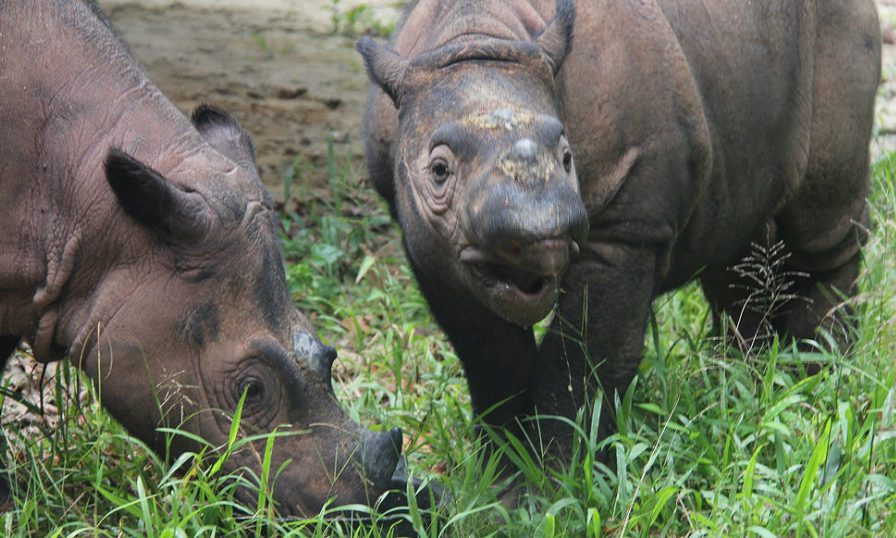SAVING SUMATRAN RHINO POPULATION WITH EMERGENCY ACTION PLAN (EAP)

-
Date:
30 Apr 2020 -
Author:
KEHATI
The condition of the Sumatran rhino population (Dicerorhinus sumatrensis) has continued to decline for decades. This condition forced all relevant parties such as scientists, central and regional governments, Technical Implementation Units (UPT), Non-Governmental Organizations (NGOs), and other stakeholders to immediately take concrete steps. One way to do that is to carry out rescue actions based on a legal document in the form of Sumatran Rhinoc Emergency Action Plan (EAP).
“The declining population of rhino should be a concern for all of us. TFCA Sumatera committed to support the implementation of EAP and rhino conservation with the funding,” said the Director of TFCA-Sumatera, Samedi
The current situation of Sumatran Rhino in Indonesia is very similar to the situation in Malaysia about 30 years ago. All parties agreed that the Sumatran rhino is currently in a state of emergency. Now, there are only two Sumatran rhinos in Malaysia, which are outside their habitat. Rhino experts do not want Malaysia’s experience to be repeated in Indonesia.
At the Workshop of Emergency Action Plan (EAP) Saving the Sumatran Rhino Population yesterday in Jakarta (19/9), rhino conservation experts and practitioners estimate the number of rhino individuals in natural habitats to be less than 100 individuals. The existence of this critically endangered species is seriously threatened by hunting, constriction and habitat fragmentation. Rhino populations are isolated and scattered in pockets with very small numbers of individuals.
This also has an impact on the declining rate of rhino reproduction. Biologically, the Sumatran rhino has a low reproductive rate, because the mating cycle (fertile period / estrus) of the female rhino is only every one and a half years and each only occurs for four days. Not to mention the threat of reproductive pathology as found in female rhinos within the Sumatran Rhino Sanctuary (SRS) of the Way Kambas National Park, Lampung and Malaysia.
“This EAP is very important with a short-term goal of producing as many rhino as possible to be released to its natural habitat. Therefore, this EAP must be synergized and can be translated into regional spatial planning and in line with the Regional Government’s Long-Term and Medium-Term Development Plan,” said Director of Biodiversity Conservation, KLHK Indra Eksploitasia.
There are two choices of emergency action that are encouraged by EAP. First, if the number of individuals is less than 15 per pocket population and the location is isolated, then an emergency action in the form of rescue of individuals is needed to be consolidated into the Sumatran rhino protection sanctuary. Next, for the population pockets that have more than 15 rhinos but are threatened by habitat loss and poaching, an emergency action will be undertaken in the form of intensive protection. The 15 individual measurements were obtained from the agreement of rhino experts at national and international meetings.
Regarding the emergency action mechanism, the local government and UPT who attended expressed their support for the steps to be taken. “Of course we have agreed to carry out what is mandated in this EAP. We are ready if indeed we have to build a Sumatran rhino sanctuary in the Aceh region to save rhinos in the Leuser Ecosystem,”said the Head of the BKSDA Aceh, Sapto.”If indeed the SRS will be built, the location should not come out of the area of origin of the Sumatran rhino,” added Sapto.
Previously, TFCA-Sumatra has provided funding for the preparation of EAP documents 2018-2021. Various efforts to protect this species also continue to be supported in 3 landscapes in Sumatra, namely in the Leuser Ecosystem, Bukit Barisan Selatan National Park, and Way Kambas National Park which is known to be home to the Sumatran r
